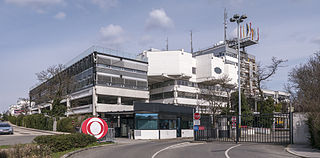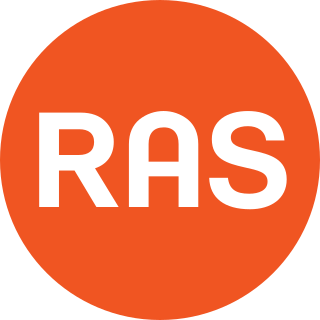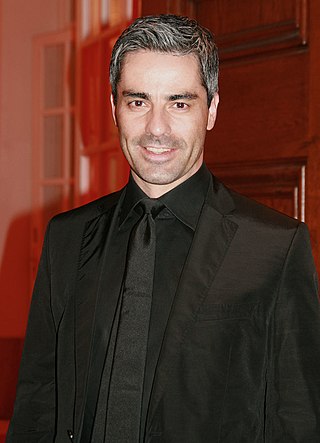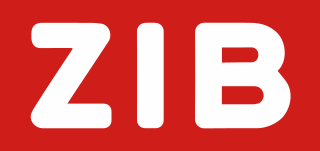
Österreichischer Rundfunk is an Austrian national public broadcaster. Funded from a combination of television licence fee revenue and limited on-air advertising, ORF is the dominant player in the Austrian broadcast media. Austria was the last country in continental Europe after Albania to allow nationwide private television broadcasting, although commercial TV channels from neighbouring Germany have been present in Austria on pay-TV and via terrestrial overspill since the 1980s.
Free-to-air (FTA) services are television (TV) and radio services broadcast in unencrypted form, allowing any person with the appropriate receiving equipment to receive the signal and view or listen to the content without requiring a subscription, other ongoing cost, or one-off fee. In the traditional sense, this is carried on terrestrial radio signals and received with an antenna.

3sat is a free-to-air German-language public service television channel. It is a generalist channel with a cultural focus and is jointly operated by public broadcasters from Germany, Austria (ORF) and Switzerland. The coordinating broadcaster is ZDF, at whose Mainz facility the broadcasting centre with studios for in-house productions is located.
Television in Germany began in Berlin on 22 March 1935, broadcasting for 90 minutes three times a week. It was home to the first public television station in the world, named Fernsehsender Paul Nipkow.
ORF 1 is an Austrian public television channel owned by ORF. It was the first television channel in Austria, started in 1955.

The Rundfunkanstalt Südtirol is a public broadcasting service, completely funded by grants of the provincial government, for the majority German-speaking province of South Tyrol, Italy whose purpose is to relay programmes from the public broadcasters of Austria, Germany, German and Romansh Switzerland. The agency has its headquarters in the province's capital city Bolzano. RAS is not related to the regional trilingual programme of RAI, the Italian public broadcaster.

ATV is the largest commercial television station in Austria, and was the first commercial station to be aired via transmitters after a long time when commercial broadcasts in Austria were only possible via satellite or cable and the national public broadcaster ORF held a monopoly of using the airwaves.

BBC Select was an overnight television service run by the BBC during the hours when BBC1 or BBC2 had closed down, usually between 2am and 6am. The channel showed programming intended for specialist audiences, such as businessmen, lawyers, nurses and teachers, and was designed to be viewed after broadcast via a video recording. It was funded by a subscription, and most programming was scrambled.
One is a German free-to-air television channel owned and operated by the German public-broadcasting consortium ARD. Managed since October 2005 by Westdeutscher Rundfunk on behalf of ARD as a whole, the channel was launched on 30 August 1997.
Rai Südtirol is an Italian free-to-air regional television channel owned by state-owned public broadcaster RAI – Radiotelevisione italiana and operated by RAI's South Tyrolean service. It is the company's German and Ladin languages television channel aimed at the German-speaking public of South Tyrol and the Ladin-speaking population of Ladinia. It was launched on 7 February 1966, it broadcast from its studios in Bolzano and unlike all other RAI channels, it carries no commercials.

Television in Austria was introduced in 1955. The country uses DVB-T for broadcasting. Analog television was completely shut down on 7 June 2011. Austrian television was monopolised by public broadcasting television stations until 1997. The first private television station in Austria was ATV.
Österreich 2 is the overall term used to refer the network of nine regional radio services provided by Austria's national public service broadcasting organization ORF.
Radio Tirol is the regional radio for Tyrol and the German-speaking population of South Tyrol, and is part of the Österreich 2 group. It is broadcast by the ORF, and the programmes from Radio Tirol are made in the ORF Tirol Studio.
The ORF regional studios are branch offices from ORF in each state of Austria. Since 1975 there is also a regional office in and since 2021 a broadcasting TV studio in Bolzano for the German-speaking population of South Tyrol, Italy.
Südtirol Heute is a television programme of the Austrian ORF, which is broadcast in Austria and relayed by the Rundfunk Anstalt Südtirol (RAS) in South Tyrol, Italy. The programme covers news from all three parts of the Tyrol, namely North Tyrol, East Tyrol and South Tyrol.
The Grand Prix der Volksmusik was an annual regional song contest for folk music, held from 1986 until 2010. The countries taking part were Germany, Austria, Switzerland and, from 2000, South Tyrol.

Roman Rafreider is an Austrian television host and journalist.

Bayern 1 is a German, public radio station owned and operated by the Bayerischer Rundfunk (BR).

Zeit im Bild (ZiB) (translated in English as A Time in the Picture) is the name for the television news broadcasts of ORF, running since December 1955.

Richard Grasl is an Austrian journalist and media manager. Among other things, he was editor-in-chief of the Austrian Broadcasting Corporation ORF Studios Lower Austria (2002–2009) and commercial director of the Austrian Broadcasting Corporation (2009–2016). He has been a member of the Kurier editor-in-chief since November 2018 and deputy editor-in-chief since January 2021.















